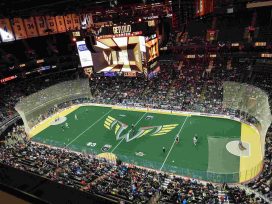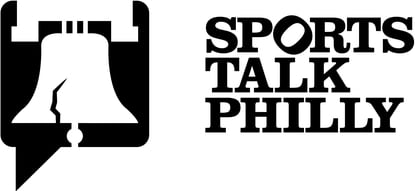During Philadelphia Flyers general manager Ron Hextall's end-of-season press conference on April, he was asked to assess the progress of fourth-year pros Sean Couturier and Brayden Schenn.
In particular, Couturier's heavy usage in defensive zone starts against opposing teams' best offensive players was brought up repeatedly, as was the issue of whether Schenn is better suited to playing center than wing.
Hextall cautioned that fans and media — and the Flyers organization itself — needs to "be really, really careful" about giving in to impatience when a still-young player (Couturier turned 22 in December) takes baby steps or some seeming lateral steps in his production and the growth of his role in offensive zone situations.
Said Hextall, "We don’t want him to be a shutdown player, either. We want him to be both. We want him to be a 200-foot player. That’s how you win championships, win playoff series, you make the playoffs… with 200-foot players. Sean Couturier is a good two-way player. Sean Couturier is also 22 years old. …He’s a young guy, [but] he’s been around for a while, so you tend to want to expect and push and everything else, and that’s part of our job. But really be careful, because sometimes patience is needed."
The same themes were repeated for Schenn. Hextall said that the player has been progressing, although not as fast as many would like.
It should also be noted that Couturier's most frequent linemates in 2014-15, Matt Read and R.J. Umberger, had poor offensive seasons (while also battling injuries) and that served to hurt Couturier's offensive totals.
Read had previously been a bankable 20-plus goal scorer but really scuffled this season, while Umberger followed up a subpar, injury-affected final season in Columbus with further decline and more injury issues in his first year back with the Flyers.
Without question, Couturier would have collected at least a half-dozen more apples in his point totals if Read and/or Umberger had better seasons. At some point, though, Couturier needs to start burying more of his own chances when he does get offensive opportunities.
Moving forward, regardless of the defensively aware system that new Flyers head coach Dave Hakstol is expected to employ, Couturier is going to have to start converting more scoring chances if he is realistically going to break out from the "defensive shutdown center" into the "200-foot center" description the player himself said on Monday is his ambition. For all the talk about his defensive chores hampering his offensive growth, Couturier easily had enough scoring opportunities this season to score several more goals.
It is not too big of a leap or an unrealistic expectation for Couturier to jump from 15 to 20 goals and from 37 to 50-plus points next season. Likewise, Brayden Schenn is eminently capable of bettering his 20-goal output of 2013-14 and his 47-point production on 2014-15 by five goals and 10-plus points.
The key may actually be to play Couturier and Schenn as a tandem; they had their most productive offensive stretches of the 2014-15 season during early-season and late-season stints as linemates.
Shortly prior to his dismissal as head coach, Craig Berube was asked if he saw promise in that possibility based on what the two did in November before an injury to Michael Raffl brought about Schenn moving to the left wing of the Claude Giroux line as well as over the final seven games of the season when lines were rearranged after Wayne Simmonds suffered a season-ending injury. During the latter stretch, Schenn played right wing on Couturier's line, and found that he enjoyed it and was actually more comfortable than when he was deployed on left wing.
It also helped that a finally healthy Read closed out the season looking more like the player he'd been in previous seasons than the slowed-down, hesitant and ineffective player he was for most of the year.
Berube said he wouldn't "mind it" to have a Couturier-Schenn tandem as an option based on the very small sample size of games the two spent together this season. Now that Hakstol will be behind the bench, unlocking they key to more consistent production from Couturier as well as Schenn is going to be one of the most important factors in finding offensive support beyond what the top line and first power play unit produce.
It is common nowadays for NHL teams to have forward "tandems" with a rotating third member of the line. Considering that the most productive stretches of 2014-15 for both Couturier and Schenn came when they were placed on the same line, Hakstol may want to experiment with the two players as a duo. Previously, Read (who could still be the third member of the line) was kept almost exclusively with Couturier over the past two seasons.







